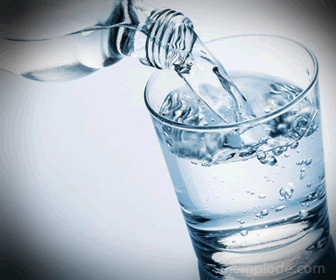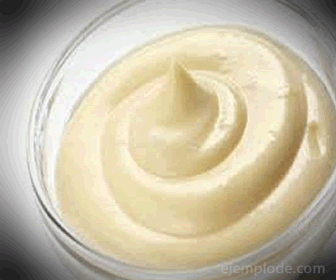Example of Homogeneous And Heterogeneous Mixtures
Chemistry / / July 04, 2021
A mix is the result of the physical combination of two or more pure substances; such substances are not involved in a chemical transformation, so it can be easily dispose of them individually, through a separation process suitable for the mix.
Mixtures come in the three main physical states, solid, liquid, and gaseous. This depends either on the physical state of all the components, or on which is in the predominant proportion.
In addition to the Physical State, Appearance is a factor determined by the abundance of the components in the mixture. Based on Appearance, it is known how many "phases" or regions of different properties are visible. This characteristic generates two types of mixtures: Homogeneous and Heterogeneous.
Homogeneous mixtures
They are those mixtures that manifest a single visible phase, so that its components are often difficult to detect in the first instance. They will be addressed by physical condition, starting with the Gaseous.
Among the Homogeneous Gaseous Mixtures, the most common is Air, which is composed of several gases in different proportions
. It contains Nitrogen N in 78 percent, Oxygen O in 21 percent, and in the rest they participate Argon Ar, Carbon Dioxide CO2, and other gases generated by human activities and biological processes, and released into the atmosphere. They are all transparent, so only the single phase is detected. There are also suspended particles and water vapor, but when measuring less than 10 microns, they are not appreciated.Among the Liquid Homogeneous Mixtures, it can be Drinking Water, for example; is the mixture of Water H2Or in the majority proportion, with dissolved salts that will fulfill the function of retaining the liquid in a better way, so that the person who is drinking rehydrates in optimal condition. In this mixture, the dissolved salts (including Sodium Chloride NaCl and Calcium Carbonate CaCO3) are tiny particles that cannot be seen with the naked eye, so the phase will be constituted only by the transparency of the Water, and will be declared as unique.
 Water is a homogeneous mixture.
Water is a homogeneous mixture.
In this case, in which the liquid mixture is homogeneous and it is difficult to distinguish its components, and it is require their separation, the most commonly used methods are Filtration, Centrifugation, and Evaporation. The first for very small particles that remain suspended, but can be trapped by suction in a filter medium, the second for when it is possible to act in conjunction with their weight to direct them to a medium where they are deposited by force centrifuge; and evaporation to, through heating to the boiling point of the mixture, separate the liquid completely, leaving the dry, clean solids as residues.
 The mayonnaise is a homogeneous mixture.
The mayonnaise is a homogeneous mixture.
Solutions, made up of Solute and Solvent, constitute the main category of Liquid Mixtures. The statement should be made that Only Diluted Solutions and Concentrated Solutions can be considered Homogeneous. In the Supersaturated Solutions the solute is already visible, and therefore a second phase.
Among the Solid Homogeneous Mixtures, Metal Alloys can be taken into account. They are generated by melting the main metal and adding the other metallic components that will change the properties. The result is a metallic solid with a single color, in which the diversity of components is not appreciated. Also found in this classification are Amalgams, metallic mixtures that are generated by incorporating certain chemical elements to a sample of liquid Mercury. The result is solid. Another example is Cement, a powder made up of a basic ingredient called Clinker, result of the calcination of limestone, clay and iron ore, with a final color appearance grayish.
15 examples of homogeneous mixtures
- The air we breathe
- Drinking water
- The blood
- The urine
- The Catsup Sauce
- The Mayo
- English Sauce
- Isotonic drinks
- Antibacterial gel
- The butter
- Body creams
- The sun block
- Floor cleaning fluids
- Fire Control Powder Extinguishers
- Steel as a metallic alloy
- Click to see more examples of homogeneous mixtures.
Heterogeneous Mixtures
Heterogeneous Mixtures They are those that have two or more visible phases, distinguishing a number of components. They also appear in the three physical states.
Heterogeneous Gaseous Mixtures appear in few cases because a great majority of gases are colorless; However, when placing a pair of different halogens in the same place, such as Chlorine and Bromine, which do have a coloration, the presence of Heterogeneity will be noticed. Another example of a Heterogeneous Gaseous Mixture can be an air sample during an afternoon of extreme winds. It will be loaded with dust particles and water vapor that will make it cloudy.
Heterogeneous Liquid Mixtures are one of the most common in everyday life. Starting from the colloids, where the solute particles are directly perceptible, and passing through the suspensions, where the particles are large enough to precipitate over time, they can be separated by methods mechanical. The solute can be deposited by gravity, until the solvent is free and homogeneous, and proceeds to separate it by Decantation.
 The salad dressing is a mixed bag.
The salad dressing is a mixed bag.
Solid Heterogeneous Mixtures are very abundant on the planet. A clear example is seen when taking a handful of sand from a beach. Its constitution is so diverse due to the presence of dozens of chemical compounds present, such as the group of silicates, carbonates and some chlorides.
 Chip cookie as an example of a smorgasbord.
Chip cookie as an example of a smorgasbord.
10 examples of Heterogeneous Mixtures
- Salad dressings
- Body creams with abrasive microspheres
- A sample of sand, with particles of different chemical composition
- Seawater
- Fruit juices with pulp
- Wastewater
- Water with Oil
- A salad
- Cereal with milk
- A chocolate chip cookie
- Click to see more examples of heterogeneous mixtures.



